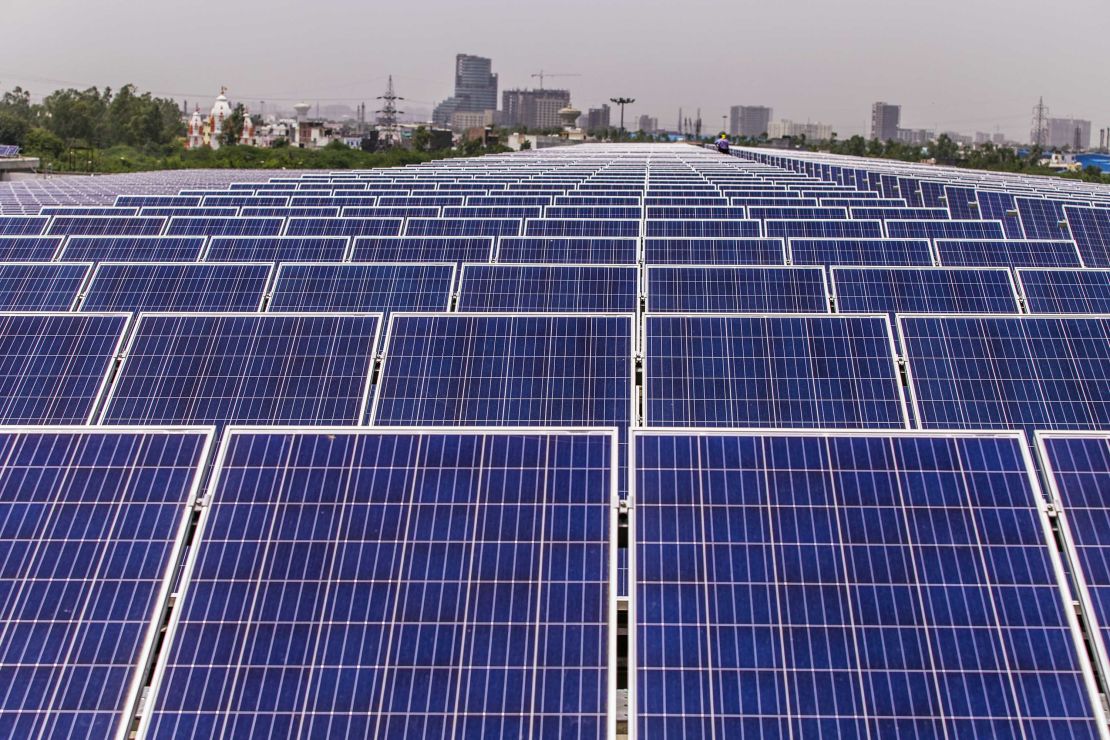Renewable energy, led by solar power, could make up 80% of the growth in electricity generation over the next decade, according to a report published Tuesday.
The International Energy Agency said it is now consistently cheaper to generate electricityby capturing the sun’s energy than by burning coal or natural gasin most countries.
Solar photovoltaic cells are now one of the cheapest sources of electricity in history thanks to maturing technologies and policies that have reduced the cost of investments, the Paris-based agency said. Photovoltaic systems can be installed as panels on homes or businesses, as well as deployed at solar parks.
The agency’s report lays out three scenarios for the future development of global energy markets, which have been roiled by the coronavirus pandemic. While fossil fuels face a precarious future, the prospects for renewable sources of power generation range from “strong to spectacular,” with solar leading the charge.
According to the International Renewable Energy Agency, an intergovernmental body, electricity costs from large-scale solar photovoltaic installations have fallen from roughly 38 cents per kilowatt-hour in 2010 to a global average of 6.8 cents per kilowatt-hour last year.
“I see solar becoming the new king of the world’s electricity markets,” IEA executive director Fatih Birol said in a statement. “Based on today’s policy settings, it is on track to set new records for deployment every year after 2022,” he added.

In one scenario explored by the IEA, under which the pandemic is brought under control and global energy demand returns to its pre-crisis level by early 2023, the number of photovoltaic systems grows strongly, boosting solar capacity by an average of 12% a year to 2030. Renewables meet about 80% of the growth in global electricity generation over the same period, overtaking coal by 2025 as the primary means of producing electricity.
Electricity is expected to account for an increasing share of overall energy consumption, given that providing clean power to sectors such as transport is critical to a low-carbon future.
According to the IEA,solar power remains a cost-effective choice even in a scenario in which the pandemic drags on, causing lasting damage to the economy and ushering in a decade with the lowest rate of energy demand growth since the 1930s.
Solar performs even more strongly in the IEA’s“Sustainable Development Scenario,” in which a surge in clean energy policies and investment puts the world on track to reach the goals of the Paris Climate Agreement. The combined share of solar photovoltaic and wind in global generation rises from 8% in 2019 to almost 30% in 2030.
“If governments and investors step up their clean energy efforts, the growth of both solar and wind would be even more spectacular — and hugely encouraging for overcoming the world’s climate challenge,” said Birol.
Some governments are including environmental commitments in their coronavirus recovery plans, as they face growing calls to use the pandemic as an opportunity to tackle the climate crisis by accelerating the shift away from fossil fuels.
Oil companies such as BP (BP) and Royal Dutch Shell (RDSA) have unveiled major strategic shifts towards low-carbon energy, in another sign that the pandemic is bringing profound changes to global energy markets.
“Whether this upheaval ultimately helps or hinders efforts to accelerate clean energy transitions and reach international energy and climate goals will depend on how governments respond to today’s challenges,” the report said.
Coal’s demise
Solar’s meteoric rise contrasts with the decline of coal, which has been a mainstay of global energy systems for decades.
Reduced economic activity and electricity demand as a result of the pandemic have catalyzed a “structural fall in global coal demand,” according to the IEA report, which expects 275 gigawatts of coal-fired capacity to be retired by 2025. That’s about 13% of total coal capacity in 2019.
Even if the global economy recovers from the pandemic next year, coal’s share in global generation falls from 37% to 28% in 2030.
“The rise of renewables, combined with cheap natural gas and coal phase-out policies, means that coal demand in advanced economies drops by almost half to 2030,” the report said. Growth in coal use in developing economies in Asia, such as India, is much lower than previously expected and is not enough to offset declines elsewhere.
For example, Chinese President Xi Jinping’s pledge to make the country carbon neutral within 40 years will require the world’s largest coal consumer to dramatically reduce its reliance on the fossil fuel.
The declining costs of solar will only spur coal’s demise. The International Renewable Energy Agency said in June that solar prices could average 3.9 cents per kilowatt-hour for projects commissioned next year, down 42% compared to 2019 and more than a fifth cheaper than coal-fired plants.
The outlook for oil, however, is less certain. Demand for crude cratered at the height of lockdowns, with factories shut, planes grounded and motorists at home. While there has been a modest recovery, some analysts, and BP, think that oil demand may never return to its 2019 high as the pandemic brings lasting changes to the way people live and travel, while prompting governments to take more aggressive steps to curb carbon emissions.
The IEA expects oil demand growth to end in the next decade, but said that without a major shift in government policies there is no sign of a rapid decline. “Based on today’s policy settings, a global economic rebound would soon push oil demand back to pre-crisis levels,” said Birol.
The report forecasts a 5% drop in energy demand this year, with energy-related carbon emissions expected to fall 7% and energy investment tumbling 18%.
























